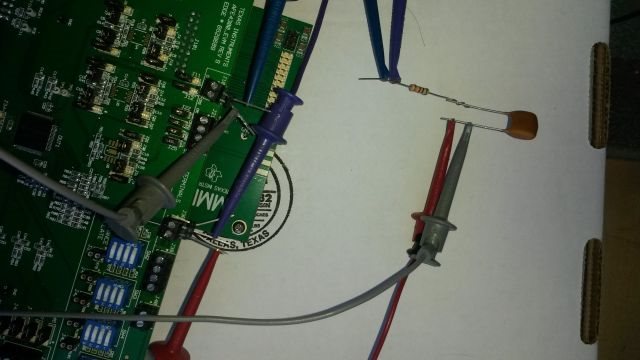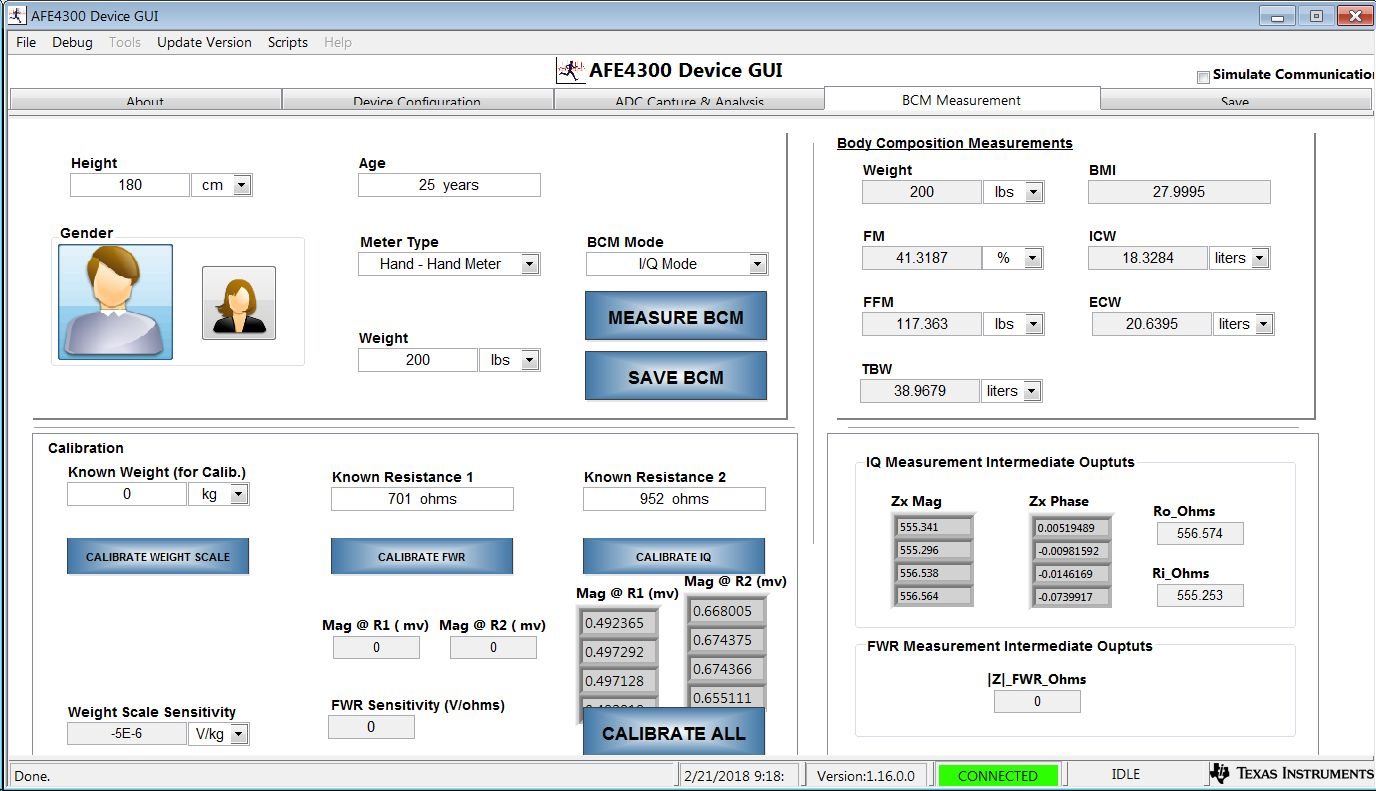Other Parts Discussed in Thread: AFE4300
I am using the AFE4300-EVM Rev B and am referencing the TI document "Impedance Measurement with AFE4300" (SBAA202 - January 2013). I am trying to reproduce the results shown in section 3.2.2 Table 3. I am getting similar Mag_M values (shown as Zx Mag in GUI) but the Phase_M values I am seeing (shown as Zx Phase in GUI) are roughly the same degree value except for the sign (i.e. I am reading 19.2 instead of the optimal -18.06). This is true for all 4 frequencies.
I am using a 100 nF capacitor and a 550 ohm resistor. I have not measured the exact values of either components but I thought they should be close enough to see similar results.
Can you think of a reason the phase I am reading is the opposite sign that Matlab calculates and that the Table 3 tests show?
Thanks, Jeff



